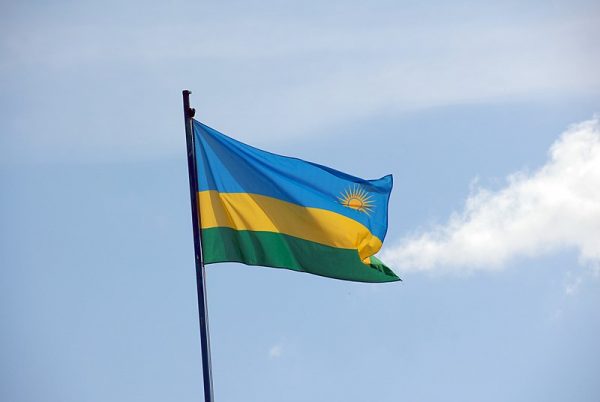Why Did the Asian Infrastructure Investment Bank Make a Loan to Rwanda
 Advertisement
AdvertisementFormally established in late 2015, the Asian Infrastructure Investment Bank (AIIB), China’s brainchild, is the youngest of the so-called regional development banks, which include the African Development Bank (AfDB), the Inter-American Development Bank (IADB) and the Asian Development Bank (ADB). Usually, these banks “stick to their lane,†as it were, in terms of regions. So, it might have come as a surprise to hear that Rwanda â€" an African country â€" recently secured a $100 million loan from the AIIB. How?
Anyone following the AIIB’s path would know lending to African countries did not start with Rwanda â€" it started with Egypt.
As the second African country to formally join the bank known for its “clean, lean, and green†motto, Egypt was able to get its first round of financing from AIIB back in 2017 for a $210 million-worth solar feed-in tariff program. Since then, Egypt has had two other projects approved â€" one for rural sanitation ($300 million) and the other for multiple smaller domestic infrastructure projects such as smart cities ($150 million). Egypt has another $300 million worth post-COVID19 recovery project, co-financed with the World Bank, pending.
Yet, Rwanda, classified by the United Nations as a Least Developed Country (LDC), only joined the AIIB in 2020, making it the ninth African member, with paid-in capital of $5 million.
Not only this, two other LDCs â€" Ethiopia and Sudan â€" joined AIIB before Rwanda and paid in more capital, $49 million and $59 million respectively. Other African countries that have made the same investment into the AIIB as Rwanda have very diverse income levels â€" Algeria, Ghana, and Cote d’Ivoire are all middle-income countries, while Guinea and Madagascar are LDCs.
Two key reasons explain how did Rwanda managed to get to the front of the queue versus these other African nations.
First, Rwanda’s project â€" like Egypt’s pending post-COVID19 project â€" is not just an AIIB-financed project. The initial $101 million of funds for the project came from the Rwandan government, and a further $150 million of loans and $32.5 million of grants will come from the World Bank. This co-financing mechanism allows AIIB â€" which doesn’t have any country offices itself due to its “lean†structure â€" to take advantage of the World Bank’s country presence for aspects such as analysis of environmental and social risk and surveillance of implementation. It thus enables money to flow out of the door faster.
Diplomat BriefWeekly NewsletterNGet briefed on the story of the week, and developing stories to watch across the Asia-Pacific.
Get the NewsletterThe second reason why Rwanda may be ahead of others on the continent is that its institutions appear to be at the forefront of implementation. For example, the Rwandan Development Bank (RDB) is heavily involved in delivery of the loans to small and medium enterprises for the new project, building on its experience of delivering the Economic Recovery Fund (ERF), which was set up in June 2020 to help businesses manage the negative economic impacts of COVID-19. With the ERF and other measures, Rwanda was estimated to be the third largest spender on COVID-19 economic response measures for citizens in relation to GDP across the entire continent, spending approximately 3.3 percent of GDP (in PPP terms), behind South Africa and Togo.
AdvertisementSo what comes next? Is more lending to African countries from AIIB on the cards, and will this really help address African infrastructure deficits, estimated at $68-108 billion annually?
More lending is highly likely. Since Rwanda joined the AIIB, two more African LDCs, Benin and Liberia, have joined with $5 million capital each paid in, taking the total African membership to 11 out of 55. Furthermore, eight other African countries are still pending membership approval, including Kenya, Senegal, and Togo. South Africa is also still “prospective†â€" while it was one of AIIB’s 57 founding members, it has not yet made a capital contribution.
Clearly, African countries are looking to the AIIB for more finance for infrastructure.
But this is the challenge. While the AIIB seems to be partnering with others in Africa, its special focus on infrastructure â€" in particular clean, green infrastructure â€" could be diluted. For instance, the World Bank has not financed a new rail project in an African country for close to 20 years â€" suggesting its expertise on infrastructure needs on the continent is highly limited. Another example is a further Rwandan project in the AIIB pipeline, $200 million for improved digital access, half financed by the World Bank. There is no doubt that investment in digital infrastructure, for instance, is now critical for education, in a way that it was not prior to COVID-19. Yet, for this project, at most 21 percent of the $200 million will be dedicated to new infrastructure build. The rest will be spent on increasing efficiency and incentives â€" from subsidizing smart-phone purchases to coding academies. This is useful, but Rwanda has just over 1,000 secure internet servers per million people. China has over 1.3 million such internet servers. The African digital infrastructure gap is huge and needs more focus.
Hence, if AIIB is to remain in the African lane, expanding beyond Egypt and Rwanda, partnerships with the AfDB and continent-wide institutions such as the Africa Finance Corporation (AFC) and African Export-Import Bank (Afreximbank) may be worth pursuing more actively in future. There is a clear need, and African members are eager.
0 Response to "Why Did the Asian Infrastructure Investment Bank Make a Loan to Rwanda"
Post a Comment